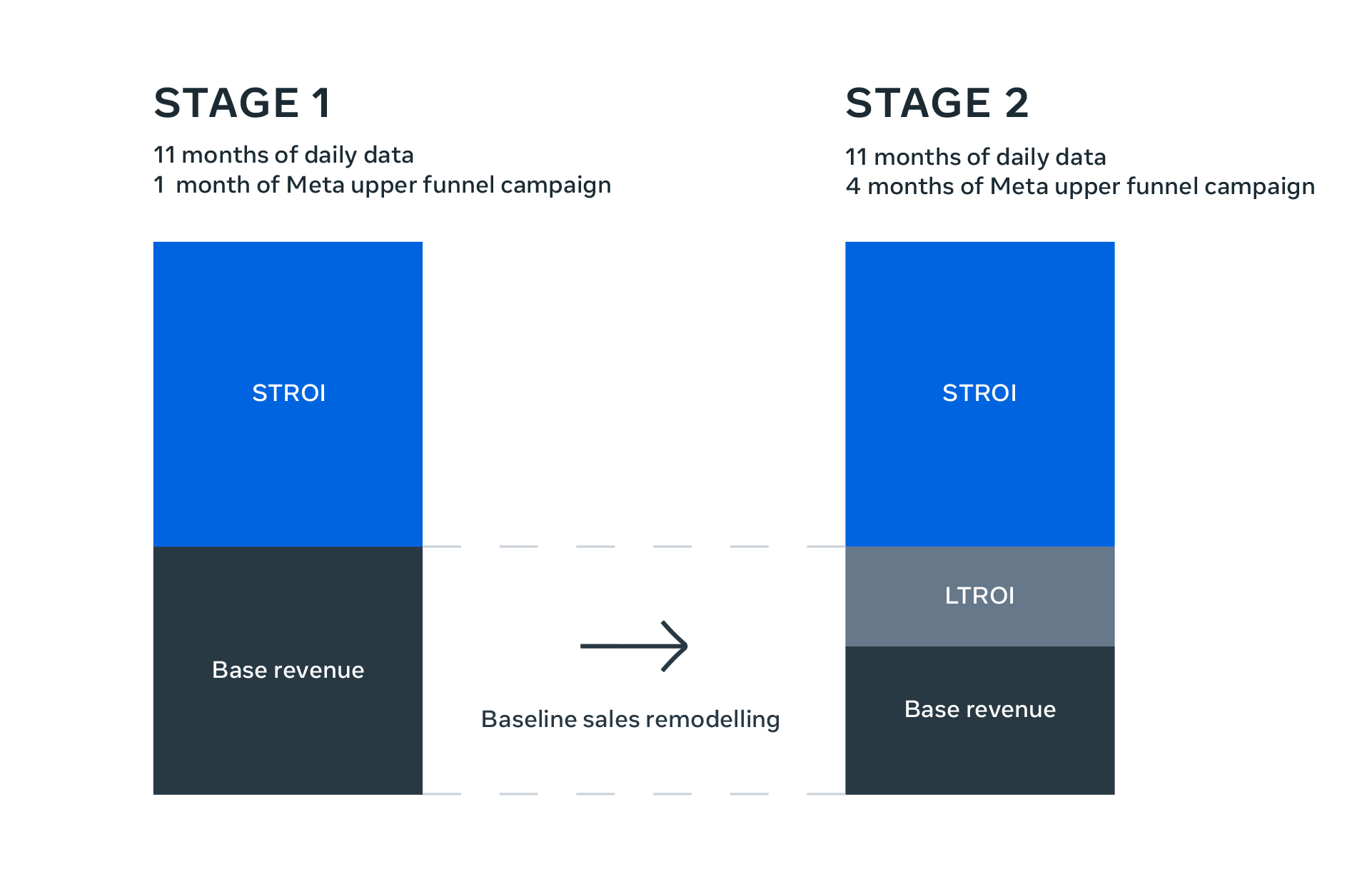Error: Contact form not found.



New research by Analytic Edge, commissioned by Meta, shows that for ecommerce and app advertisers adding reach campaigns on Meta technologies to their performance advertising can drive $4.3 in revenue for every $1 invested. The research also shows that Meta upper-funnel campaigns deliver 8.5x more revenue than television.

‘‘App and e-commerce advertisers lead the industry in lowerfunnel digital advertising and this is reflected in their marketing investment; on average 71% of their budgets go into digital channels. However, the reverse is true for upper-funnel campaigns. There is significant untapped potential for these businesses in using their digital expertise to deliver upper-funnel digital lead campaigns. New research shows these businesses have an opportunity to deliver up to 25% greater revenue from this approach, which is crucial in this challenging economic climate.’’
Analytic Edge analysed 15 months of advertisers’ data using marketing mix modelling (MMM). The research set out to explore the incremental benefit of adding Meta upper funnel campaigns to their performance strategy.
Ecommerce/app advertisers tend to favour lower-funnel performance campaigns (signal-based optimised towards short-term sales) and typically allocate very little marketing towards digital upper funnel strategies (optimised for reach or brand awareness). Such lower funnel focused strategies can lead to “saturation” once brands reach and convert all the available consumers and growth can slow.
It’s critical to build more demand from new audiences which is where upper funnel can help. Measurement often holds advertisers back from committing to upper funnel campaigns. The prevalence of last touch attribution models, which are used to measure the effectiveness of their advertising tends to underreport the full extent of media channel impact (e.g. blind-spots caused by privacy restrictions or account advertising carry-over). By using MMM, this study demonstrates the full effect of both upper funnel and direct response campaigns and compares Meta technologies with television.

Ecommerce and app advertisers assess most of their marketing investments by measuring in the short-term, which leads them to investing heavily in performance-lower funnel campaigns. Digital marketing excels at finding potential buyers and placing ads in front of them. But for large ecommerce advertisers this can lead to ‘in-market’ audiences becoming saturated.
The aim of the study was to test the hypothesis that adding upper funnel campaigns to ecomm/app advertisers on Meta technologies will unlock new audiences and be effective in driving sales/revenue in both the long and short-term versus direct response (DR) activity alone.

The study conducted over 15 months uses MMM to analyse the impact of the upper funnel campaigns on sales. It analyses thousands of campaigns and 6.3 billion impressions from ecommerce and app businesses1.

‘‘Backed by MMM findings, the test to add reach objectives alongside our usual conversion campaigns has helped drive longer-term sales for Charlotte Tilbury Beauty. As a result, we have shifted our investment priorities, including putting more budget behind reach ads.’’
Upper funnel campaigns on Meta technologies were measured after 1 month and after 4 months. ROI was calculated after both 1 month and 4 months to evaluate the impact
The results show that running the Meta reach and frequency campaign for a longer period led to a +13% higher total ROI. After one month of running the campaign the positive short-term impact was 2.5 ROI. However, extending the campaign to 4 months led to a short-term ROI increase and a total of 4.3 ROI.



Whilst ecomm / app advertisers invest 71% of budgets into digital for low funnel campaigns this switches for upper funnel: the current mix for upper funnel is 76% traditional to 24% digital, however greater revenue could be delivered with a more optimal and digital mix.
Budget optimisation was conducted with the goal of understanding the maximum return on investment (ROI). It was found that while keeping the overall budget constant, boosting upper-funnel campaigns in digital channels can increase revenue by +22%.
Simulations run suggested:


Performance-heavy advertisers can see the full impact of media channels - in the long and in the short term -by advancing their measurement solutions from ‘last click attribution’ to marketing mix modelling (MMM).
When looking to scale their advertising messages most app/ecomm advertisers make the mistake of over indexing their upper funnel advertising with traditional media. It is clear from this research that a more digital upper funnel strategy can deliver incremental revenue cost effectively.
Adding Meta upper funnel campaigns to Meta performance campaigns is more effective than performance campaigns alone. For every incremental $ invested in Meta upper funnel campaigns, $4.3 in revenue can be delivered back to the advertiser. Additionally, elongating these upper funnel campaigns from 1 month to 4 months can further increase this by +13% ROI. Ecommerce and app advertisers can benefit from reallocating marketing budgets away from television as Meta upper funnel campaigns deliver 8.5x greater revenue than television. Doubling Meta investment can fuel an increase of ROI by +25%.

‘‘Our MMM project with Meta and Analytic Edge helped us to better understand the true value of our advertising channels, which was not clearly visible to us when we were using last-click or MTA as a source of truth. Now, we can optimise our marketing mix and invest our budget more efficiently—not only between platforms, but also at every level of the marketing funnel.’’
Methodology of measuring short- and long-term impact
Meta partnered with Analytic Edge to model impact of upper funnel brand campaigns on both short-term and long-term ROI using Marketing Mix Modeling (MMM).
The modelling was broken into 2 stages: 1) modelling short-term ROI and 2) appending additional 3 months of data to refresh short-term ROI (STROI) and remodelling the baseline sales to capture the long-term ROI (LTROI).
Long-term multipliers help understanding the total impact on the modelled KPI. For example, an long-term multiplier of 2 means that the total impact over the long-term is actually 2x of the short-term impact.
